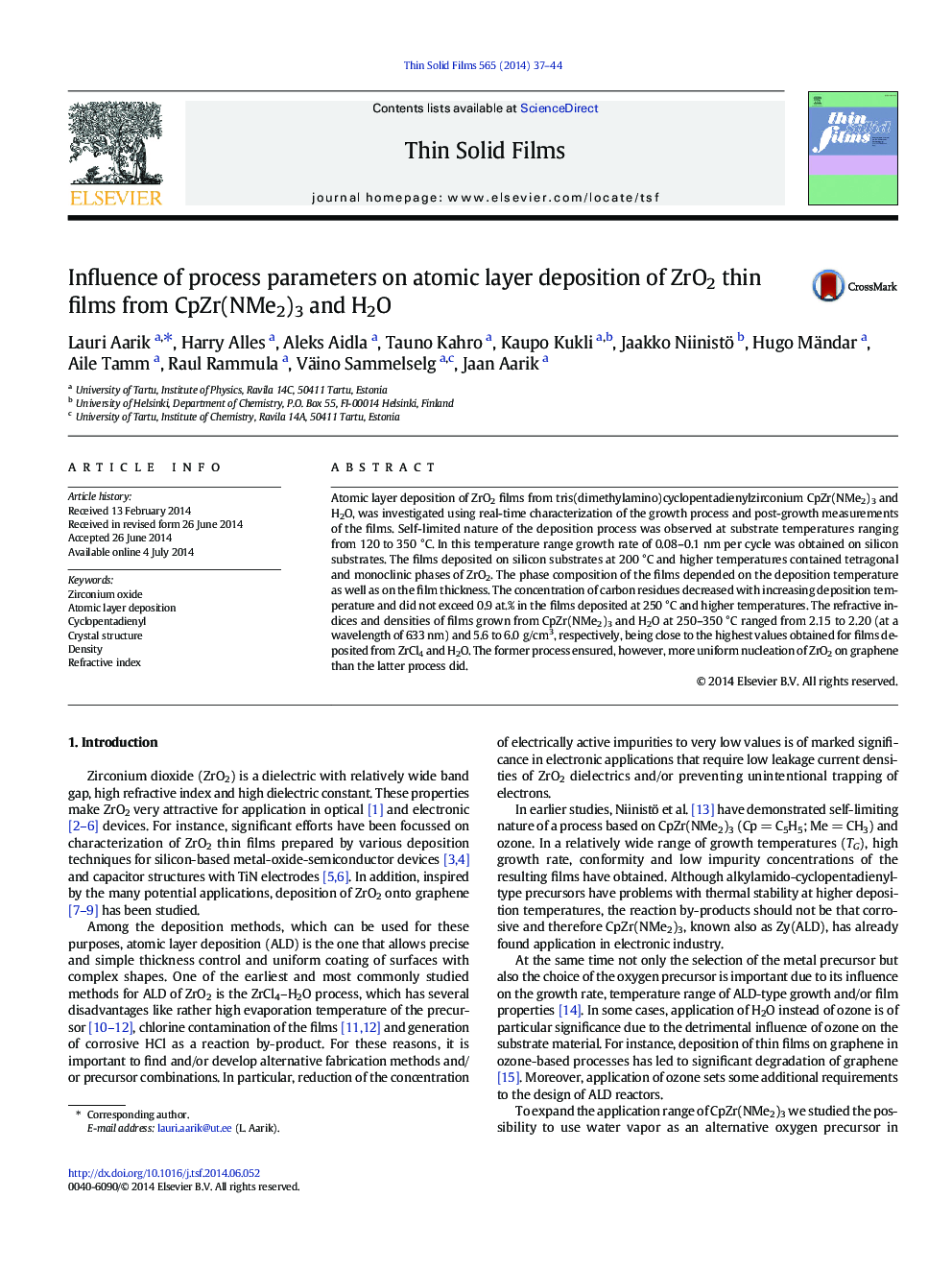| Article ID | Journal | Published Year | Pages | File Type |
|---|---|---|---|---|
| 1665275 | Thin Solid Films | 2014 | 8 Pages |
•Thin films were grown from CpZr(NMe2)3 and H2O on Si substrates by ALD.•The growth of ZrO2 was obtained at temperatures 120–350 °C.•Growth rates up to 0.1 nm per cycle were observed.•Films with refractive indices up to 2.2 at 633 nm were obtained.
Atomic layer deposition of ZrO2 films from tris(dimethylamino)cyclopentadienylzirconium CpZr(NMe2)3 and H2O, was investigated using real-time characterization of the growth process and post-growth measurements of the films. Self-limited nature of the deposition process was observed at substrate temperatures ranging from 120 to 350 °C. In this temperature range growth rate of 0.08–0.1 nm per cycle was obtained on silicon substrates. The films deposited on silicon substrates at 200 °C and higher temperatures contained tetragonal and monoclinic phases of ZrO2. The phase composition of the films depended on the deposition temperature as well as on the film thickness. The concentration of carbon residues decreased with increasing deposition temperature and did not exceed 0.9 at.% in the films deposited at 250 °C and higher temperatures. The refractive indices and densities of films grown from CpZr(NMe2)3 and H2O at 250–350 °C ranged from 2.15 to 2.20 (at a wavelength of 633 nm) and 5.6 to 6.0 g/cm3, respectively, being close to the highest values obtained for films deposited from ZrCl4 and H2O. The former process ensured, however, more uniform nucleation of ZrO2 on graphene than the latter process did.
